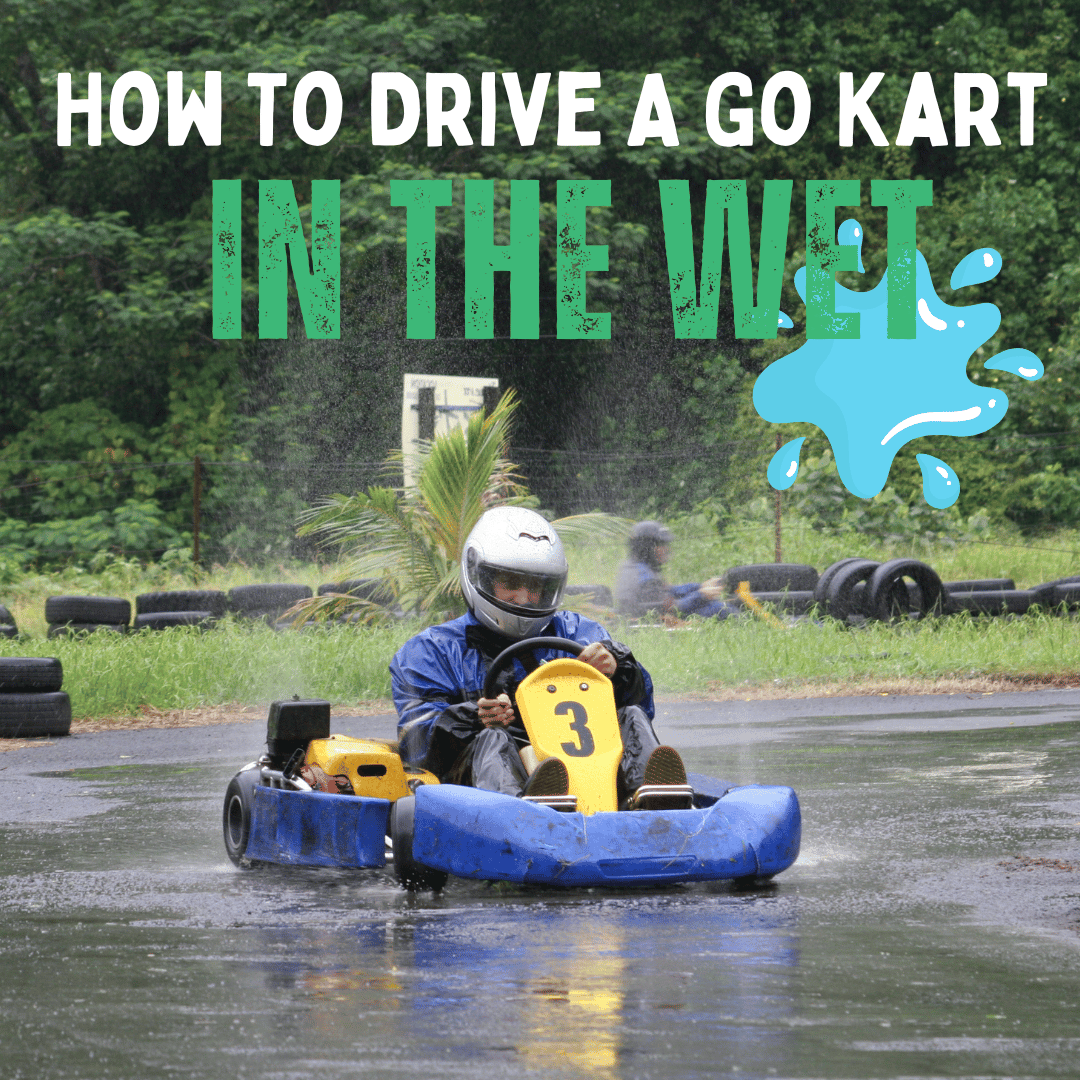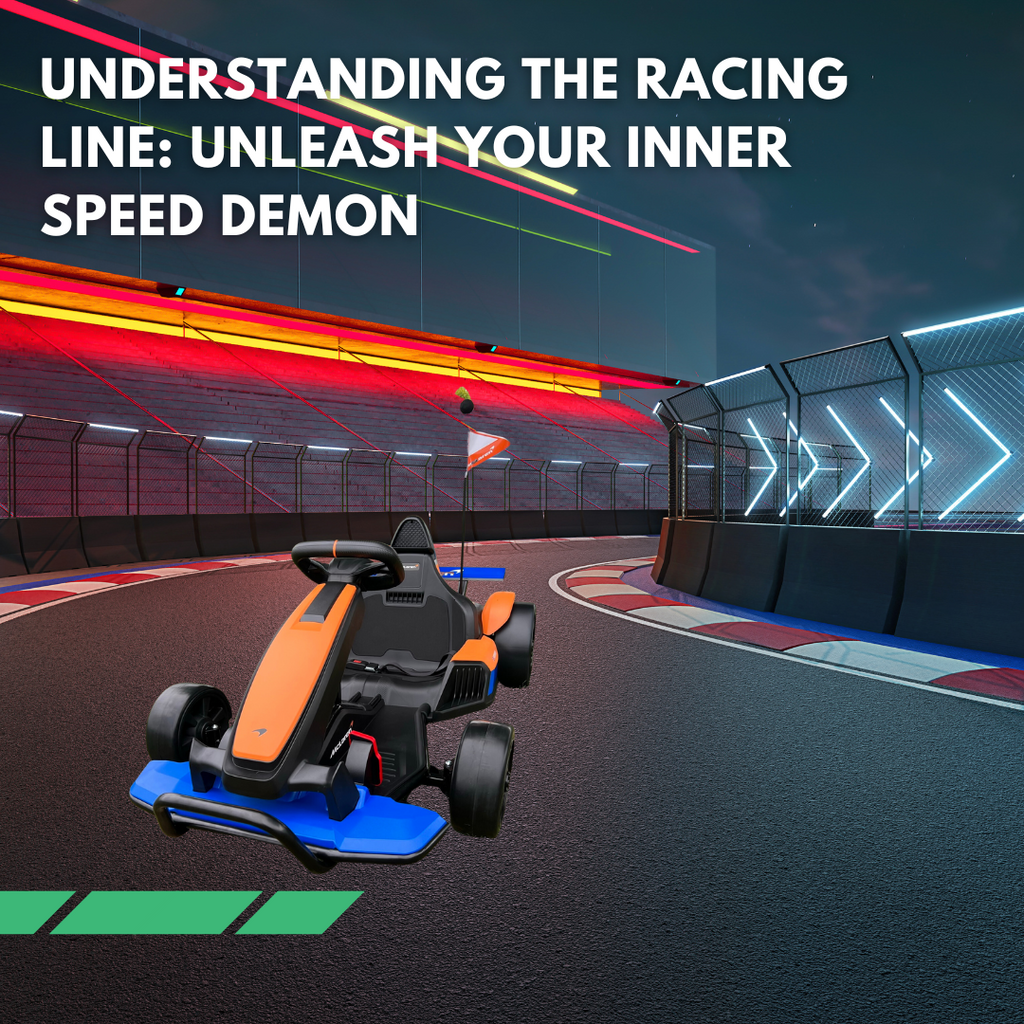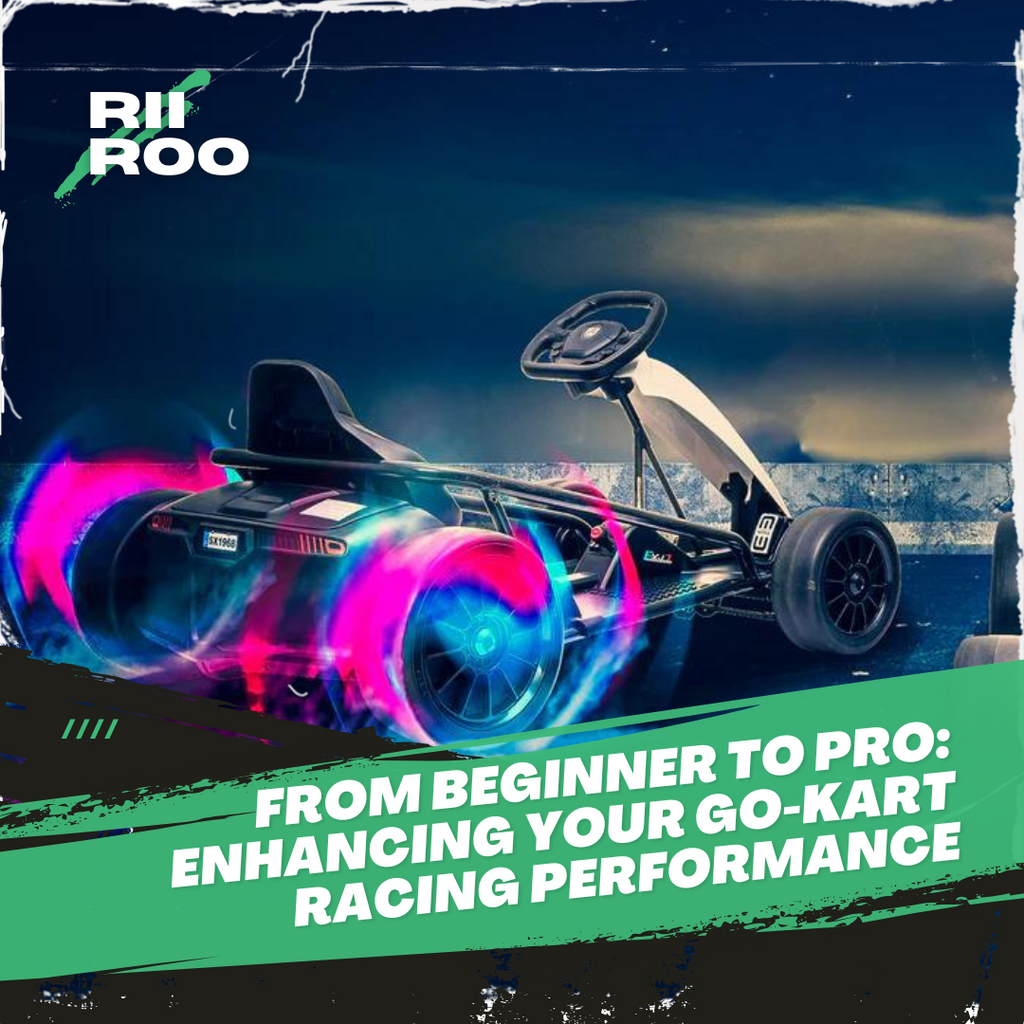
Updated: 16.05.25
Conquer go-kart racing in the rain with our expert guide! Whether you’re a beginner learning how to drive a go-kart or a pro mastering wet tracks, this article covers essential techniques for throttle control, braking, racing lines, and tyre choices. Dive into wet go-kart racing and general driving tips, inspired by our Science of Go-Karting.
1. Getting Started: Go-Kart Driving Basics
For Beginners
New to go-karting? Start with smooth inputs: gently press the throttle, steer gradually, and brake early. Sit upright, grip the wheel firmly, and follow the track’s flow. Practice on dry tracks before tackling wet conditions. Learn more in How Do Go-Karts Work?.
Safety Tips
Wear a helmet, gloves, and a racing suit. Ensure your kart’s tyres and brakes are in top condition, especially for wet racing. Check out our Pros and Cons of Electric Go-Karts for Kids for equipment tips.
2. Understanding the Wet Track
Navigating Wet Conditions
Rain transforms the track, making it slick and unpredictable. Understanding wet track conditions is crucial. Avoid puddles and seek grippy surfaces. Explore our guide on Understanding the Racing Line for more.
Finding the Optimal Racing Line
In wet conditions, the fastest line often avoids the slick, rubbered-in path. Look for drier patches or textured surfaces with better grip. Study the track’s layout—highs, lows, and corners—to plan your trajectory. Kerbs can provide extra traction if used carefully.
Using Kerbs for Grip
Kerbs enhance grip in wet conditions. Lightly touch them to stabilize your kart, but avoid aggressive contact to prevent spins.
3. Mastering Throttle Control
Throttle in Wet Conditions
Smooth throttle control prevents wheelspin on wet tracks. Apply gradual inputs, especially exiting corners. Refine your skills with Enhancing Your Go-Kart Racing Performance.
Preventing Wheelspin
Wheelspin occurs when rear wheels lose traction. Ease into the throttle and modulate based on track feedback to maintain stability.
| Technique | Description | Benefits |
|---|---|---|
| Smooth Acceleration | Gradually increase throttle to avoid wheelspin. | Maintains traction, prevents spin-outs. |
| Partial Throttle | Use partial throttle in corners to control speed. | Enhances cornering stability. |
| Throttle Modulation | Adjust throttle based on traction feedback. | Maximises grip in changing conditions. |
| Throttle Blipping | Tap throttle during gear changes to maintain engine speed. | Smoothens transitions, keeps momentum. |
4. Cornering in Wet Conditions
Smooth Steering
Wet tracks increase understeer, where the kart resists turning. Use smooth, positive steering to guide the kart and avoid sudden movements that cause slides. Learn more in How to Avoid Understeer.
Throttle in Hairpin Turns
In hairpin turns, apply light throttle mid-corner to rotate the kart toward the exit. Master this with The Best Go-Kart Overtaking Tips.
5. Effective Braking Techniques
Braking Off the Rubber
Hard braking on wet tracks causes slides. Brake early and gently before the grippy, rubbered-in areas to maintain control.
Trail Braking
Trail brake by gradually releasing the brake while entering corners to shift weight forward, improving front-end grip and corner entry.
6. Maximising Grip
Understanding Traction
Traction is your tyres’ grip on the track. Wet conditions reduce adhesion, so seek textured or drier surfaces. Watch our YouTube guide for visual tips.
Wet Tyre Strategies
Wet tyres with grooves or rain tires with deep treads disperse water for better grip. Softer compounds enhance traction but wear faster. Consult your kart’s manual or track rules for tire choices.
| Tire Type | Features | Best For |
|---|---|---|
| Slick Tires | Smooth, maximum contact, best on dry tracks. | Dry conditions, high-speed racing. |
| Wet Tires | Grooved, disperses water, enhanced wet grip. | Light rain, wet tracks. |
| Intermediate Tires | Moderate grooves, suits mixed conditions. | Damp or drying tracks. |
| Rain Tires | Deep grooves, superior water dispersion. | Heavy rain, very wet tracks. |
7. Body Positioning for Wet Racing
Weight Distribution
Your body position affects handling. Lean into turns to counter understeer and shift weight smoothly to maintain balance.
Balancing Techniques
Lean slightly forward in wet conditions to improve front tire grip. Avoid jerky movements to keep the kart stable.
8. Racing Strategy in the Wet
Drive Smoothly
Wet racing rewards finesse. Smooth throttle, steering, and braking inputs maximise speed and control.
Avoid Sudden Movements
Abrupt actions cause spins. Stay calculated with gentle inputs to maintain traction.
Summary
Wet go-kart racing tests your skills with slick tracks and reduced grip. From finding the optimal racing line to mastering throttle, braking, and body positioning, this guide equips beginners and pros alike. Choose wet tires, drive smoothly, and explore The Best Go-Kart Racing Tips for more. Ready to race? Check out RiiRoo’s go-karts!
Get in Touch 🚀
Loved our guide on wet go-kart racing? Discover more tips at RiiRoo.com.
Have questions about go-karts or kids’ ride-on toys? Try our Live Chat or browse our go-kart collection!
Frequently Asked Questions
Can you go-kart in the rain?
Yes, go-karts can race in light to moderate rain with wet tires and smooth driving. Avoid severe storms to ensure safety.
What tires are best for wet go-kart racing?
Wet tires with grooves or rain tires with deep treads provide the best grip. Softer compounds enhance traction but wear faster.
How do I drive a go-kart in the rain?
Use smooth throttle and braking, adjust your racing line to grippy areas, lean into turns, and avoid sudden movements.
How do I avoid mistakes in wet go-kart racing?
Don’t drive aggressively, use kerbs for grip, follow drier lines, and shift body weight smoothly to prevent slides.
How do I start go-kart racing as a beginner?
Learn smooth throttle, steering, and braking on dry tracks, wear proper gear, and practice wet techniques with our guide.









Share:
Can You Go Kart With Glasses? | Your Journey Starts Here
How Much Does a Racing Go-Kart Weigh? (UPDATED 2025)